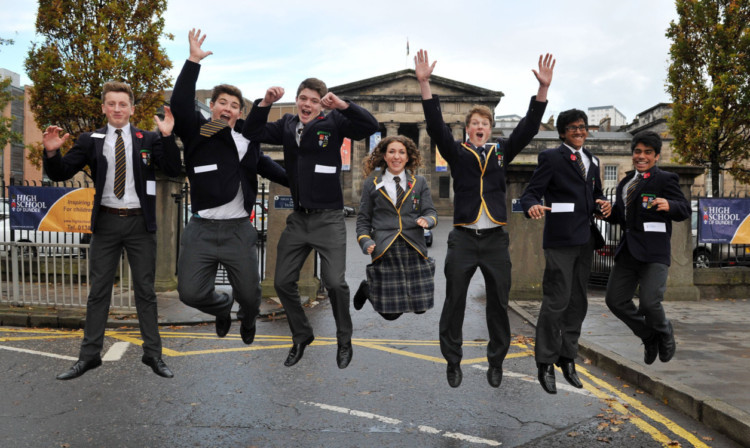It might cost more than the average salary to send a child to a Scottish boarding school but it’s not putting parents off digging deep to pay for their children’s eduction. The Courier education reporter Grant Smith finds out more.
A total of 31,146 pupils across Scotland are in private education, their parents taking the choice to upgrade from the state education offering. The figures come from the Scottish Council of Independent Schools’ annual report this week, showing there is no shortage of parents willing to stump up in the expectation their child will reap the rewards of a top-class education. The figure is down just 0.7% on a year ago.
SCIS director John Edward said: “Any parent who pays school fees will confirm the outlay is worthwhile if their children are happy at school and this is undoubtedly a key reason that pupil numbers in our sector have remained stable, alongside the financial assistance that schools allocate to widen access.”
The independent sector educates 4.5% of the total pupil population of Scotland, making it equal in size to the seventh-largest local authority. Pupil numbers have remained stable over the past decade, an achievement SCIS regards as “remarkable” given the impact of the recession. It believes this points to the high levels of confidence that parents have in the more than 70 independent schools it represents.
The census figures show the number of day pupils has fallen by only 0.6% over the past year, while the total for boarders is down by 1.6%.
However, SCIS said that boarding schools have seen a recent rise in the number of inquiries from Germany, China, Russia, Spain, France and Nigeria, with significant numbers too from North America and south Asia.
Attending an independent school does not come cheap. The average fee for a senior day pupil in 2012/13 was £10,173, with a place at a boarding school costing £26,910 that is more than the UK average salary of £26,500.
However, all schools offer financial assistance, most commonly in the form of means-tested awards which are granted on the basis of financial need. The level of support can vary from a free place to awards worth around 20% of the fees.
What parents are paying for is an education they believe to be better than that on offer at most state schools. That is a belief that appears to be borne out by this year’s exam results.
These showed a 93% pass rate for S5 pupils sitting 180,000 Highers and a 93% pass rate for S6 pupils sitting 22,000 Advanced Highers. The independent sector accounted for 16.1% of the total number of entries for Advanced Highers.
Gordon Woods, Warden of Glenalmond College in Perthshire, said: “There is strong demand for places at Glenalmond and we are now almost at capacity with pupil numbers at our main point of entry 10% higher than last year.
“This shows that high-quality education in its widest possible sense remains a top priority for parents who recognise the value and enrichment we can offer.
“Last year we provided means-tested support that was in excess of 10% of our gross income from a variety of sources, allowing us to widen access to the school to those who may not otherwise have been able to afford it.”
Dr John Halliday, Rector of High School of Dundee, said its pupil numbers remained strong as parents continued to value very highly the excellent all-round education on offer.
“Pupils at the school enjoy learning in a friendly and welcoming environment in which they are taught by a highly dedicated teaching staff and have the chance to develop their talents whereever they may lie thanks to the huge range of co-curricular activities which we have.
“Our parents are also attracted by the fact that our school has the best exam results north of the Forth, small classes, outstanding facilities for sport, a highly effective guidance system which supports each individual, and an ethos delivered via a fully integrated curriculum which develops the whole person.”
